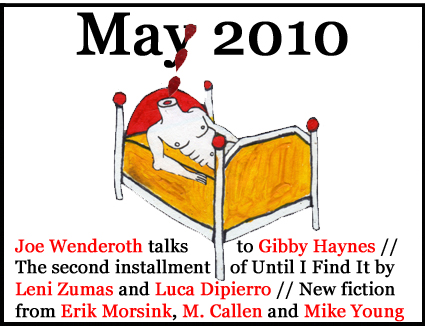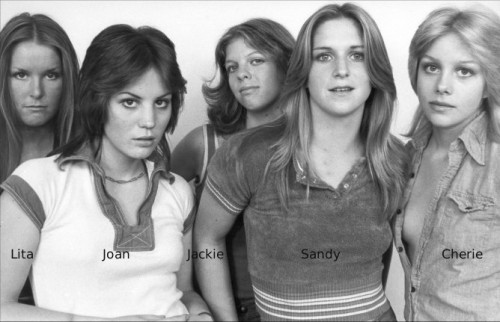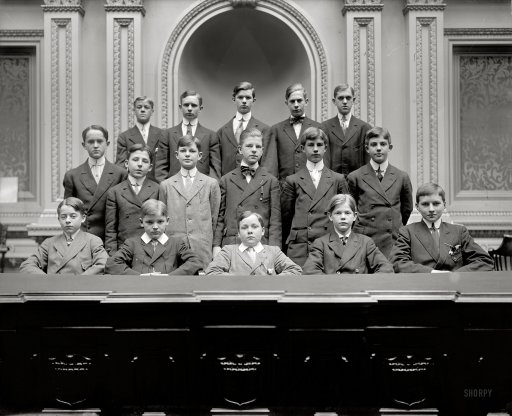NEW MARTIN AMIS
“This remarkably tedious new novel by Martin Amis…” Awesome. If Kakutani hates it, there’s a pretty good chance I’ll love it. Only Liesl Schillinger, whose sour-smug review of Peter Hoeg’s magnificent The Quiet Girl breezily and speciously claimed its narrative “lurches toward pedophilia,” annoys me more as far as NY Times reviewers go. Can’t wait!
What exactly does [Andrew Sullivan] think is going to happen now? Does he imagine that Kagan, in an uncharacteristically un-butch moment, is going to break down in front of Orrin Hatch and tearily confess to having cloistered away a secret lesbian lover in some Cambridge bat cave because she was worried that Alan Dershowitz would be really really mean to her about it? Because that would go over really well for gay rights–what a role model!–never mind Kagan’s confirmation.
lokes in damp 3 hotos
1. Neil from ESPN has been emailing me. And he says, “In short: We’re inviting folks to submit (to fictioncontest@espnthemag.com) sports-themed short stories of up to 3,000 words, and the best story (as picked by me and the editor of Stymie) will run in a future issue of ESPN. Then comes the fame and fortune, naturally.”
If you have a sports story, send it. Deadline is June 1st.
2. I just got an iPhone. Why should writers care? What can I do now besides take notes and commit “Douche baggery in a mesmerizing false flame.”
3. This invisible bookshelf is like emo-in-a-seatbelt badass.
Old boys
It’s recently come to my attention that HTML Giant is an “old boys club,” or at least, that’s what I’ve been told. So here’s my problem: if commenters are right and HTML Giant is an old boys club, then what role do the women have on this site? I mean, I read HTML Giant pretty faithfully, and I have since long before I was contributor, and I’ve always thought the women play a very significant role. Their posts are thoughtful, funny, often profound. So wtf? If anything, calling HTML Giant an old boys club denigrates the women who post here and the women who read here. And that’s what I think.
Murderous Fucking Murderous: An Interview with Kate Zambreno
Kate Zambreno go es for the throat. Or at least her language does, in the manner of those who came to wreck not by demanding, but by will. Her debut novel, O Fallen Angel, (which won the Chiasmus Press ‘Undoing the Novel’ contest) arrives in the grand spirit of Acker, Artaud, Burroughs, but where these are A and A and B, Kate is Z in full: her own, slick, squealy, and of another light. As well: Fun, funny, fucked, freaklit, surprising, terrifying, gorgeous. Her words are a meat we surely want more of, quickly.
es for the throat. Or at least her language does, in the manner of those who came to wreck not by demanding, but by will. Her debut novel, O Fallen Angel, (which won the Chiasmus Press ‘Undoing the Novel’ contest) arrives in the grand spirit of Acker, Artaud, Burroughs, but where these are A and A and B, Kate is Z in full: her own, slick, squealy, and of another light. As well: Fun, funny, fucked, freaklit, surprising, terrifying, gorgeous. Her words are a meat we surely want more of, quickly.
On the event of her book’s release (which you can pick up now through SPD) (and read an excerpt of at The Collagist) (and see read live in Chicago this Saturday at Quimby’s), Kate and I spent some time discussing via email her new book, her influences, art, language, terror, cliches, Playboy, Bacon, body fluids, and all things therein.
* * *
BB: The copy of the back of O Fallen Angel says it was inspired by Francis Bacon’s Three Studies for Figures at the Base of a Crucifixion. The images in that painting are quite striking, esp. in that I didn’t look it up until after the text. The orange and white contrast, with the odd body shapes on pedestals as if vivisected and mutated bits of humans stuck on gross smooth forms really resonated in retrospect with the three rotating voices of your text, and made me realize a lot about it in seeing, applying the imagery to the residual effect of your words. I wonder if you could talk about how that image struck you as a way of opening the door here, what effect it had in a process sense, and perhaps how it continued to inform the structure or tone of the book.
Kate Zambreno: I’ve been really haunted by that triptych. For a while I lived in London, really when I first started writing I worked in fiction at Foyle’s bookshop and read all of this experimental fiction for the first time—Ann Quin and Elfriede Jelinek and all the Peter Owen books, Jane Bowles, Anna Kavan—and ran the cult fiction section. I would go to the Tate Museums to the Francis Bacon room in the Tate Britain where they had that first major triptych. I worshipped and gawked at that first triptych, that orange gruesome horror it filled me with such violence and ecstasy. Those three gruesome distorted bodies, the open mouths in Bacon, the silent scream. I’m really interested in the silent scream how we are muted in society, Bacon’s mouths, Helene Weigel’s mouth wide open screaming an empty loss in Mother Courage, Munch’s Scream. I guess that’s some of what I was writing towards in O Fallen Angel, what I’m really always trying to write towards, those who are dumb and deaf but inside writhing with unwordable agony, and are diagnosed as selectively mute, those who lack language so they commit violent acts, they are only given language that is banal and well-behaved , the need to burn burn burn but they cannot so they set fire to themselves, they self-immolate (as one of my characters does literally and the other does symbolically). The spectacle of this, of the wound, to borrow an idea from Mark Seltzer’s cultural study of the serial killer. And we gather around this wound, this trauma in our talk-show society, but then we also suppress it, the anguish, sadness, we medicate it. I also really love how much a reader Bacon was and we both share a passion for the Greeks, the Greek tragedy really inspired O Fallen Angel, especially The Oresteia, the choruses threaded, some of the imagery, and Malachi is a Cassandra figure, ranting, raging, never believed.
Last weekend I read Norwood by Charles Portis on a Peter Pan Bus from NYC to Northampton, Massachusetts. Tremendously funny and sharp, a pre-cursor to the Coen Brothers. And not just hee-haw, but vivid to the point of effortless grace: one man is described as “holding out his tongue like he was waiting for a coin.” Everyone in Norwood is breezy and distinct, even the people “driving the conflict,” which makes it kind of avant-garde, right? For one or two sentence characterization and all-around deft awesomeness, I’ve not read much better recently than Charles Portis. Why is this post a snippet? Because Ed Park already wrote an awesome essay about Portis. Now let’s all read everything Portis has written and gab about it.
Hey, it’s Monday! Time to go back to work!
Let’s get those phones made, people.
4 Loonmachines
1. New online edition of Gigantic Magazine is now live for May.

2. DC’s exhibits 50 treehouses

3. Mark Baumer is walking and blogging across America from coast to coast (for real, he just started this weekend)

4. Amelia Gray’s constraint writing & media for this week at Everyday Genius
Film & Music & Reviews
Guest PostsGIANT Guest-post: Kati Nolfi on The Runaways

I’ve been living life as a Runaway. I saw the movie three times, I read the books Neon Angel and Joan Jett, watched Foxes, and cut my hair. This narrative has a pull over me, a grown lady who should be done with slouching and greasy hair. The Runaways, the books, and the interviews, especially of Kristen Stewart and Dakota Fanning, are texts that clarify and complicate the meaning of child actors and musicians growing into adulthood.
Kristen Stewart is amazing. In interviews she’s not coy and cute, she’s weird and rude and awkward, defying the script of normal behavior. Her Internet lovers and haters seem obsessed with her nervousness and stuttering. Nothing seems to be a pose and that seems to piss people off, as if she should posture, stand straight and smile. The truth is in the YouTube commentariat, mean, gracious, and otherwise. One detractor says, “Kristen looks more like a hobo than a star.” That’s a good thing! Girl, meet me in the desert and we can be friends.
May 10th, 2010 / 9:47 am


